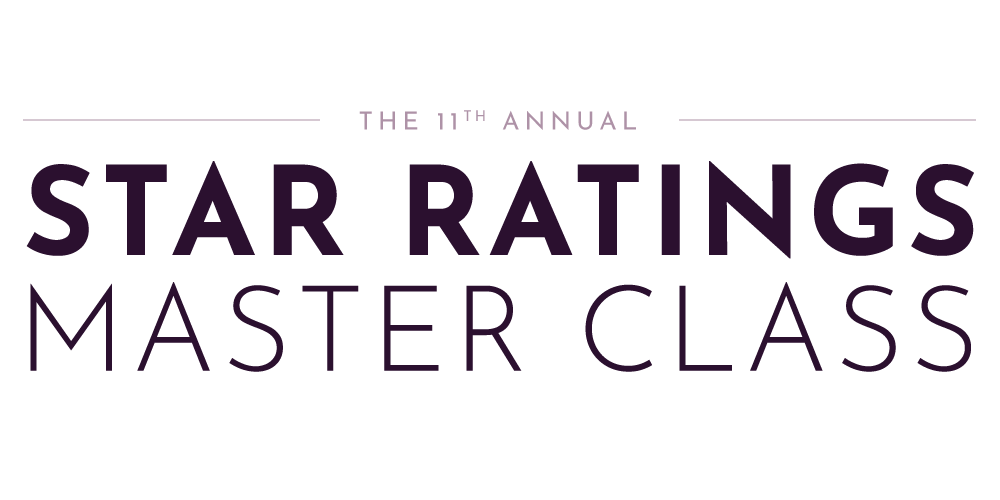mPulseu2019s Government Programs Strategic Market Executive, Reva Sheehan, discussed Keeping Momentum: Best Practices to Maintain or Improve Star Ratings, with Johns Hopkins, Ph.D., Director, Quality Improvement, Tejaswita Karve, at RISEu2019s 11th Annual Star Ratings Master Class. Here are our Key Takeaways:
Member Experience Depends on Meeting Member Communication Preferences
Newly weighted star measures capture anything from call center measures to HOS measures and more, and all will tie back to member experience in some way. Analyzing sentiment from interactions will be an area that plans, and providers will need to focus on more heavily as those weights start to take effect. Asking such questions such as, what resonates with the member? What do members respond to? And then measuring such data and using it to meet members communication preferences, is vital to star ratings moving forward. For instance, plans will want to know which and how many members prefer IVR over text message, or email over mailers. Reva Sheehan from mPulse made an interesting point, that CMS, and others, expect plans to reach out to their members using multiple forms of communication. That means the data the plan uses to see who prefers what kind of communication should be segmented appropriately and used in addition to other touchpoints. A plan can see high engagement from email outreach, but they cannot forget or ignore the members who prefer IVR, or link-to-web. Using an omnichannel approach to execute dialogue between member, plan, and provider, is key to guiding the planu2019s entire population to the right resources and messaging. Understanding what outreach works best for each member and keeping them at the center of the planu2019s communication strategy will also build that trust and long-lasting relationship with their member. So, when it comes to value-based care, truly tailoring touchpoints to each memberu2019s preference is one of the first steps to maintaining an effective and trusting ongoing dialogue.
Leveraging Communication Tools to Shift back into In-Person Care
Although star ratings will see its largest shift towards member experience, plans will still need to prioritize other HEDIS measures in addition to experience, such as preventive screenings and care for example. And plans may need to focus on those clinical quality of care measures even more so due to precautions from stay-at-home orders in 2020. With a new drop in preventive screenings alongside star ratings shifts, plans and providers have strong reasoning to leverage communication tools even more to get the message out about the importance of preventive screenings, among other health management tools and benefits. When we enter a post-pandemic phase and members start seeking out digital and in-person care, vaccine information, or following up on screenings they have postponed, providers will need to work within their systems to manage what may seem like a cascade of sudden requests. On the plan side, though it may be more difficult to directly affect what kind of care a member receives, they can help educate and set up the right expectations for the member to help ease that transition, so the member is less likely to experience an unpleasant surprise when reaching their appointment. Plans can leverage their communication tools and partners to make sure that end-to-end member experience is accounted for, which can also translate into positive CAHPS survey responses.
Scalable Solutions that Work for All
Member Engagement should encompass what works for everyone and segment that outreach accordingly to work effectively. Special populations such as hard-to-reach members and the underserved communities hold a bit of the focus in terms of member engagement, and as they should, but as the weights change over the next two years, the focus will need to widen to members that are also mildly engaged. The mildly engaged members are those who donu2019t need ongoing care or who have readily available access to their healthcare and donu2019t feel like they need to be in continued conversation with their plans. So, when it comes to scaling an engagement solution, it means using tailored content that reflects each memberu2019s level of need. Like u00a0Tejaswita Karve mentioned in the panel, u201cOne method wonu2019t work for everyone u2013 one size does not fit all.u201d Understanding the nuances in the way communication formats are used is important to tailoring content to fit the memberu2019s preferences, rather than the other way around. Capturing those preferences as useable data will give the plan an opportunity to scale their solutions more effectively than strictly going off what works for most.
Proactively Educating Members Will Continue to Make a Big Impact
Educational outreach will become even more important as we head into the vaccine phases of the pandemic. Plans and providers will also need to continue informing members about tools and benefits the plan already offers, creating more positive touchpoints and improving overall plan-member experience. For example, when the plan reaches out to members proactively, to educate them about cost savings when adjusting their medication refills, they inch closer to that triple-aim for the member and the plan. The member is more likely to adhere to their health goals and benefit from a cost saving, and the plan benefits from member adherence. Providing benefits education proactively gives the plan the opportunity to set up a positive experience for the member right from the start.
Innovation through COVID-19
COVID-19 pushed plans and providers to become more creative and innovative in the way they educate members and provide care delivery. Tools like mail order prescriptions have become more of a norm because it allows members to follow COVID safety protocols while maintaining their care. These newer habits will probably remain post-pandemic. Now that members understand how easy it can be to jump online to see their doctor, CMS quickly lifting those restrictions, and plans beginning to umbrella those costs, members are less likely to fully transition back to pre-pandemic health visit practices. Those practices often included longer wait times, requiring more resources and time from more health care workers, etc. Through all this innovation, plans, providers, and the entire industry will feel pressure to show their adaptation to changing expectations. As adoption of new virtual care platforms, digital therapies, or other tools increases, so will the need to inform members, so will the need to guide them through that adoption, and engage them to keep them connected over the long term.
As we look forward to this new year, it is a good reminder that plans should inform their members about benefits that are available to them in an ongoing, conversational manner. It establishes trust that goes beyond the higher weighted Stars measures. Ongoing communication establishes a trust that builds a long-standing relationship with members, which has proven time and time again to bear the most value for everyone.



